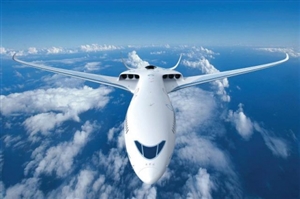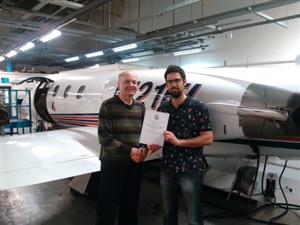 Envisaged as one of the biggest challenges and opportunities for the future of aerospace the inaugural “All Electric Aircraft Technology” IET Symposium held at Savoy Place in late January 2016 brought together experts from across academia and industry to discuss, debate and analyze the key enabling technologies that will be required to support and drive forward the commercial viability of More Electric Airplane with the aim of ultimately achieving an All Electric Aircraft for both military and commercial passenger/freight use.
Envisaged as one of the biggest challenges and opportunities for the future of aerospace the inaugural “All Electric Aircraft Technology” IET Symposium held at Savoy Place in late January 2016 brought together experts from across academia and industry to discuss, debate and analyze the key enabling technologies that will be required to support and drive forward the commercial viability of More Electric Airplane with the aim of ultimately achieving an All Electric Aircraft for both military and commercial passenger/freight use.Fueled by the demand for greater reliability, availability, and power density while aiming to reduce weight, complexity, fuel consumption, operational costs, and environmental impact, the Symposium highlighted the challenges the aerospace sector faces today and those envisaged for the future as part of the ever-increasing research into the increased electrification of aircraft.
Keynote speech from Professor Iain Gray CBE (Canfield University and former Chief Executive of Innovate UK) discussed the need for a sustained aerospace capability across academia and the importance of maintaining strategic relationships with the world’s major aerospace industrial organizations to develop and advance the research necessary to attained future technological growth and commercial delivery.
Dr Johannes Stuhlberger (Chief Technical Officer, Airbus Group ) and Nicolas Fouquet (Airbus Group Innovations) provided the symposium with an insight into Airbus developments in the field of More Electric, Hybrid Electric and All Electric architectures included the latest on the Airbus E-fan one of industries leading and strategically import programs that continues to focus on the development and testing of viable MEA technologies.
The afternoon session lead by Dr Peter Malkin (Newcastle University) provided a more in depth technical insight into hybrid electric technologies in key areas such as alternative propulsion, superconducting AC propulsion motors from Professor Sandy Smith (University of Manchester), electrical machines for aircraft electrification from Dr Chris Gerada (University of Nottingham), the interdependent architecture and protection considerations for distributed electric propulsion power systems from, Catherine Jones (University of Strathclyde).
The symposium concluded with an insight from an alternative high tech industry with a look at the evolution of electric propulsion in the automotive and motorsport sectors from Angus Lyon (Rockfort Engineering).
Throughout the symposium a poster completion was run on “the challenges and benefits behind all electric technology”. The IET judging panel were very impressed with the technical content of all the posters on display and the knowledge of the delegates in answering questions on their specific field of expertise. Each demonstrated a sound understanding of the challenges and benefits of AEA and what work can be done in the near term to fully realize the potential of this future vision. The focus of the posters varied between detailed technical issues and wider views on implementation.
 The overall winner was Guillermo Fernandez-Cerezo, from Kingston University, with his poster on the application of AEA as a crop dusting vehicle. This poster defined many environmental, business and financial benefits as well as looking to the future and providing a mini roadmap on how to enable the crop duster to transition in to service. Overall it was agreed that Guillermo’s poser and his responses to questions best answered the set question.
The overall winner was Guillermo Fernandez-Cerezo, from Kingston University, with his poster on the application of AEA as a crop dusting vehicle. This poster defined many environmental, business and financial benefits as well as looking to the future and providing a mini roadmap on how to enable the crop duster to transition in to service. Overall it was agreed that Guillermo’s poser and his responses to questions best answered the set question.Second place went to Steven Nolan, from the University of Strathclyde, with his poster titled ‘Fault Analysis and Management in Superconducting Turboelectric Distributed Propulsion Systems’.
In summary will the All Electrical Aircraft ever be achieved? Time will tell, however the consensus of opinion around the symposium was that although the All Electrical Aircraft should remain the ultimate industry goal, the steps in trying to achieve this will push the forefront of technology development and advancement towards a More Electric Aircraft and alternative Hybrid Powered solutions. These advancements will inevitability shape the future of aircraft design even if a commercially viable All Electrical Aircraft is never achieved.
On behalf of The IET and the Aerospace Technical Professional Network I would like to thank all those who supported, attended and contributed to the success to the inaugural Aerospace Annual Symposium.
The playlist of presentations from this event is available here.
David M. Lindley
Chairman IET Aerospace Technical Professional Network